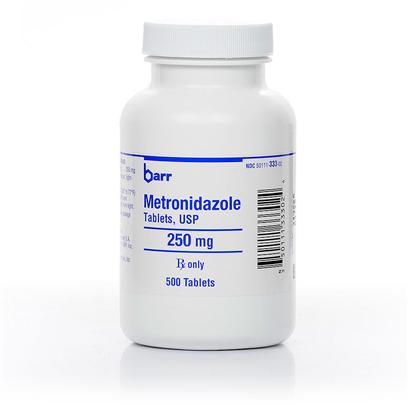Give your dog Metronidazole for at least five to seven days. Metronidazole is typically prescribed for dogs for a minimum of five to seven days to effectively treat their condition.

Credit: toegrips.com
How Many Days To Give Metronidazole
When giving your dog metronidazole, it is important to follow your veterinarian’s instructions and give the medication for the recommended duration, which is typically around 5 to 7 days.
Consulting A Veterinarian
Before determining the duration of metronidazole treatment for your dog, it is important to consult a veterinarian. A veterinarian will assess your dog’s condition and provide you with the appropriate dosage and treatment length tailored specifically to your dog’s needs. They can consider any underlying factors that could influence the duration of metronidazole treatment.
Factors Influencing Duration
Several factors can influence the duration of metronidazole treatment for dogs. These factors include:
- The severity of the infection or condition being treated
- The type of infection or condition
- Your dog’s overall health and immune system
- Your dog’s weight and size
- Any other medications or supplements your dog is taking
Typical Treatment Length
The typical treatment length for metronidazole in dogs is often five to seven days. However, this can vary depending on the specific condition being treated and the veterinarian’s recommendations. Some dogs may require a longer treatment duration if their infection or condition is more severe or if they have a compromised immune system.
It’s crucial to follow your veterinarian’s instructions regarding the duration of metronidazole treatment. Stopping the medication too soon can result in incomplete eradication of the infection, leading to potential relapse or antibiotic resistance.

Credit: www.petcarerx.com
Administering Metronidazole To Dogs
Administering medication to our beloved pets can often be a challenge. However, when it comes to metronidazole, a commonly prescribed antibiotic, it’s crucial to ensure proper administration to achieve optimal results. In this article, we will discuss the essential aspects of administering metronidazole to dogs, including the proper dosage, whether it should be taken with or without food, and how to monitor for any potential side effects.
Proper Dosage
When it comes to metronidazole, it is imperative to adhere to the proper dosage guidelines recommended by your veterinarian. The dosage may vary based on your dog’s weight, condition being treated, and the severity of the infection. It is essential not to exceed the prescribed dose, as this can lead to adverse effects.
To determine the correct dosage, your veterinarian will consider factors such as your dog’s breed, age, overall health, and the specific condition being treated. They will provide you with clear instructions on the correct dosage and administration frequency, which may include dividing the daily dosage into two or three smaller doses.
Remember, it is crucial to complete the full course of medication, even if your dog starts feeling better. Stopping the treatment prematurely could result in the return of the infection or the development of antibiotic resistance.
Taking With Or Without Food
Metronidazole can be administered with or without food, depending on your veterinarian’s recommendations. However, some dogs may experience stomach upset or gastrointestinal disturbances when taking this medication on an empty stomach. If your dog experiences any of these side effects, you can try giving the medication with a small meal or treat.
On the other hand, if your dog doesn’t experience any digestive issues when taking metronidazole on an empty stomach, you can continue administering it this way. However, always follow your veterinarian’s advice to ensure the best possible outcome.
Monitoring Side Effects
While metronidazole is generally safe for dogs when administered correctly, it is crucial to remain vigilant for any potential side effects. Some common side effects of metronidazole in dogs may include nausea, vomiting, diarrhea, loss of appetite, or lethargy.
If you notice any of these side effects, contact your veterinarian promptly. They may recommend adjusting the dosage or switching to an alternative medication. Additionally, it’s essential to keep an eye out for any signs of an allergic reaction, such as difficulty breathing, swelling, or hives. In such cases, seek immediate veterinary attention.
Your veterinarian will provide guidance on what to expect and how to address any side effects your dog may experience during the course of metronidazole treatment.
In conclusion, administering metronidazole to your dog requires attention to proper dosing, considering whether to give it with or without food, and monitoring for potential side effects. By following your veterinarian’s instructions and keeping a watchful eye, you can ensure the best possible outcome for your furry friend’s health.

Credit: zh-cn.facebook.com
Frequently Asked Questions On How Many Days Should I Give My Dog Metronidazole
Is 3 Days Of Metronidazole Enough?
The recommended duration for metronidazole treatment is usually 5 to 7 days.
Is It 5 Or 7 Day Course Of Metronidazole?
Metronidazole treatment for dogs typically lasts for at least five to seven days.
Is Metronidazole 5 Days Or 7?
Metronidazole for dogs usually needs to be taken for at least five to seven days. It’s important to follow your veterinarian’s instructions for the specific dosage and duration of treatment.
Can I Stop Metronidazole After 3 Days?
It is important to complete the full course of metronidazole as prescribed by your doctor. Do not stop taking it after 3 days without consulting your doctor first. Always follow the instructions and finish the prescribed duration of treatment to ensure effectiveness.
Conclusion
The duration of metronidazole treatment for dogs depends on the specific condition being treated and the veterinarian’s recommendation. Most dogs will need to take metronidazole for at least five to seven days, but this can vary. It is crucial to follow your veterinarian’s instructions and complete the full course of treatment to ensure optimal results.
Remember, always consult your veterinarian before administering any medication to your furry friend.


